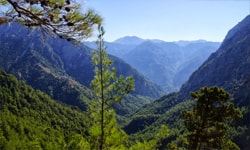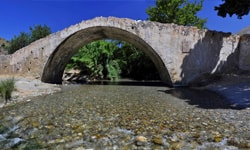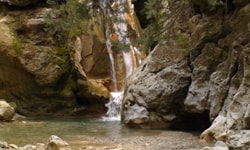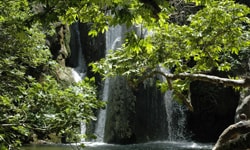The gorge of Mindris starts near the village Filippi and ends at the port of Tsoutsouras, after running a distance of 6km. It is a open canyon without vertical walls, which’s riverbed is dry in summer and very easy to walk. On the riverside traces of ancient settlements, ranging from the Minoan to Roman Era have been found.
Anapodaris Gorge is formed at the final part of the longest river of Crete, Anapodaris, that collects the waters of Central Province Heraklion and South Dikti Range. The suggested route has a duration of 3-3.5 hours and is possible during summer or late spring when the river does not have too much water. It is worth noting that the river empties to the sea about 40 million cubic meters of water annually.
The Gorge Porofarago or Sfakoryako is a small canyon, almost 2 km long, starting from village Kato Vatheia and ending near the settlement of Vrachokipos. It is crossed by the river Krommidas carrying water on the beach Kokini Hani.
Gorge Perdikaris is located between villages Miriokefala and Argoules, along the borders of the prefectures of Rethymnon and Chania. It is a rugged canyon with steep gradients, low vegetation and large opening throughout its length.
At the drier side of Crete, near the seaside village Goudouras of Sitia Province we meet fouir parallel gorges of unique beauty. All of them are technical and descent requires rope. At the driest side of Crete, near the seaside village Goudouras of Sitia Province we meet fouir parallel gorges of unique beauty. All of them are technical and descent requires rope.
Very beautiful small canyon that starts from Meseleri village and after turning to a wide river, it waters of the dam of Bramiana. The vegetation consists mainly of pine trees, while its main feature are the striking eroded rocks and sides.
The Gorge of Ethia, officially known as Vorno, is located south of Heraklion, at the Asterousia Range. It starts from the village Ethia and, after tearing Asterousia northwards, it finishes at the plain of Messara, between the villages and Rotasi and Mesochori.



























































































